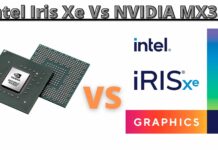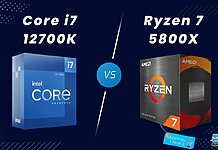GeForce RTX 2060
Rated: 8/10
GeForce GTX 1070
Rated: 7/10
Pros & Cons
| Graphics Cards | Pros | Cons |
|---|---|---|
| RTX 2060 | ✅ DLSS and Ray Tracing Support ✅ Better Power Management | ❌ Slightly Smaller VRAM ❌ Runs Slightly Hotter |
| GTX 1070 | ✅ Matured Drivers ✅ Incredibly Low Cost | ❌ No Ray Tracing and DLSS Support ❌ Near End of Lifecycle |
- The RTX 2060 outperforms the GTX 1070 by approximately 20.75% in terms of FPS. Therefore, the RTX 2060 is the better performer in this comparison.
- The GTX 1070 consumes approximately 8.5% more power than the RTX 2060. Therefore, in terms of power efficiency, the RTX 2060 is better.
- The temperature difference between the RTX 2060 and GTX 1070 is approximately 5.88%. The RTX 2060 has a slightly higher temperature so it might run hotter than the GTX 1070.
- The price difference between the RTX 2060 and GTX 1070 is 8%. Despite the GTX 1070 having a lower current price by 47%, the RTX 2060 provides better value due to its lower launch MSRP and relatively close current price.
Comparison Table
| GPU | RTX 2060 | GTX 1070 |
|---|---|---|
| Architecture | Turing | Pascal |
| Memory | 6 GB (GDDR6) | 8 GB (GDDR6) |
| Bus Width | 192-bit | 256-bit |
| No. of Shaders | 1920 | 1920 |
| No. of TMUs | 120 | 120 |
| No. of RT Cores | 30 | 0 |
Architectural Differences
- Clock Speed: RTX 2060 has a base clock of 1365 MHz, while the GTX 1070 operates at 1506 MHz.
- VRAM: RTX 2060 has 6 GB of GDDR6 VRAM, whereas GTX 1070 boasts 8 GB of GDDR6 VRAM.
- TDP: The RTX 2060 has an average power draw of about 139 watts, while the GTX 1070 has an average of 152 watts.
- Processing Nodes: RTX 2060 is built on TSMC 12nm processing nodes, whereas GTX 1070 uses TSMC 16nm.
- Other Difference: RTX 2060 supports DLSS and Ray Tracing, whereas GTX 1070 lacks support for these features.
While we previously examined the RTX 2060. Now, we’re comparing the GeForce RTX 2060 and the GeForce GTX 1070 to check how well they perform, how much power they use, and if they’re worth the price. This helps us decide which is better to buy and which isn’t good to consider in today’s tech world.
Gaming Benchmarks
In this comparison section, I will be comparing the RTX 2060 vs GTX 1070 in various gaming benchmarks.
Testing Rig
- Processor: Intel Core i7-13700K
- Motherboard: MSI MEG Z790 ACE MAX Motherboard
- RAM: XPG Lancer RGB 32GB 7200MHz DDR5
- CPU Cooler: Deepcool Assassin II CPU Cooler
- Storage: XPG GAMMIX S70 BLADE 2TB NVMe SSD
- PSU: ENERMAX REVOLUTION D.F. X 1050W
Red Dead Redemption 2 (Ultra Settings)

- In Red Dead Redemption 2 with ultra settings (using the Vulkan API), the RTX 2060 demonstrated superior performance, delivering an average of 54 FPS, compared to the GTX 1070’s average of 42 FPS.
- During demanding gameplay moments, the RTX 2060 maintained smoother performance with 1% lows of 47 FPS, while the GTX 1070 exhibited worse performance with 1% lows of 36 FPS.
Cyberpunk 2077 (High Settings)

- For Cyberpunk 2077 with high settings, the RTX 2060 and GTX 1070 delivered similar average FPS, with the RTX 2060 achieving 56 FPS and the GTX 1070 reaching 54 FPS.
- While in demanding gameplay sequences, the GTX 1070 performed better with 1% lows of 45 FPS, while the RTX 2060 lagged substantially behind with 1% lows of 32 FPS.
Dying Light 2 (High Settings)

- Playing Dying Light 2 with high settings, the RTX 2060 once again established its dominance by delivering a superior average of 57 FPS, leaving the GTX 1070 behind at 44 FPS.
- Now, RTX 2060 performed better with 1% lows of 46 FPS, surpassing the GTX 1070’s 38 FPS and ensuring more consistent gameplay.
Elden Ring (Maximum Settings)

- When playing Elden Ring at maximum quality settings, the RTX 2060 and GTX 1070 achieve an identical average of 62 FPS, delivering comparable performance. This can be attributed to the game engine limiting the FPS.
- Both graphics cards perform consistently during demanding gameplay sequences with 1% lows of 44 FPS. The similarity in the 1% lows can also be a function of the game engine.
Far Cry 6 (Ultra Settings)

- Far Cry 6 at ultra settings showcased better performance from the RTX 2060, delivering an impressive average of 79 FPS, while the GTX 1070 lagged with 61 FPS.
- The RTX 2060 maintained much smoother performance with 1% lows of 58 FPS, providing a more consistent and immersive gaming experience compared to the GTX 1070’s unsavoury 35 FPS.
Forza Horizon 5 (Ultra Settings)

- Using ultra settings in Forza Horizon 5, the RTX 2060 showcased better performance with an average of 58 FPS, outperforming the GTX 1070’s 48 FPS. This is a highly well-optimized game, so any performance deltas here are indicative of better raw performance.
- In this test, RTX 2060 maintains smoother performance during big races with 1% lows of 46 FPS, surpassing the GTX 1070’s 37 FPS.
God Of War (High Settings)

- When playing God of War at high settings, the RTX 2060 outperformed the GTX 1070 with an average of 86 FPS compared to 64 FPS. This test indicates the biggest delta in performance so far, which might be because this is one of the newer games we’ve tested in this comparison.
- For graphically demanding scenarios, the RTX 2060 performs better with 1% lows of 75 FPS, surpassing the GTX 1070’s 56 FPS.
A Plague Tale Requiem (Ultra Settings)

- I was running A Plague Tale Requiem on ultra settings, and the RTX 2060 achieved an average of 57 FPS, surpassing the GTX 1070’s 51 FPS.
- The RTX 2060 delivered better performance with a 1% low of 51 FPS, outperforming the GTX 1070’s 48 FPS. This test’s difference in 1% lows can be marked as the margin of error.
Overall Gaming Performance
| Featured | RTX 2060 | GTX 1070 |
|---|---|---|
| Average FPS | 64 📈 | 53 📈 |
| %1 lows | 50 📉 | 43 📉 |
| Winner: GeForce RTX 2060 | ||
The RTX 2060 outperforms the GTX 1070 by approximately 20.75% in terms of FPS. Therefore, the RTX 2060 is the better performer in this comparison. With DLSS enabled on the RTX card, expect a 10-30% boost in FPS, letting you push settings further.
Power Consumption
| Game | RTX 2060 (W) | GTX 1070 (W) |
|---|---|---|
| Red Dead Redemption 2 | 149 | 162 |
| Cyberpunk 2077 | 145 | 156 |
| Dying Light 2 | 150 | 160 |
| Elden Ring | 128 | 151 |
| Far Cry 6 | 119 | 131 |
| Forza Horizon 5 | 126 | 138 |
| God Of War | 153 | 169 |
| A Plague Tale Requiem | 155 | 170 |
| Average Power Consumption | 143.5 W⚡ | 156.6 W⚡ |
| Winner: GeForce RTX 2060 | ||
The GTX 1070 consumes approximately 8.5% more power than the RTX 2060. Therefore, in terms of power efficiency, the RTX 2060 is better. The difference in these numbers is not large enough to affect your power bill or to make you consider upgrading your power supply for the RTX 2060.
Temperatures
| Game | RTX 2060 (°C) | GTX 1070 (°C) |
|---|---|---|
| Red Dead Redemption 2 | 57 | 52 |
| Cyberpunk 2077 | 55 | 53 |
| Dying Light 2 | 57 | 53 |
| Elden Ring | 48 | 49 |
| Far Cry 6 | 50 | 46 |
| Forza Horizon 5 | 52 | 49 |
| God Of War | 58 | 52 |
| A Plague Tale Requiem | 58 | 57 |
| Average Peak Temperature (°C) | 54.8°C🌡️ | 51.5°C🌡️ |
| Winner: GeForce GTX 1070 | ||
The temperature difference between the RTX 2060 and GTX 1070 is approximately 5.88%. In my testing, With these temperatures, both these cards have enough thermal headroom to ensure that heat would not be a point of failure.
Pricing And Value
| Graphics Card | Launch MSRP | Current Price |
|---|---|---|
| RTX 2060 | 💲349 | 💲210 |
| GTX 1070 | 💲379 | 💲110 |
| Difference | 8% | 47% |
The price difference between the RTX 2060 and GTX 1070 is 8%. Despite the GTX 1070 having a lower current price by 47%, the RTX 2060 provides better value due to its lower launch MSRP and relatively close current price.
What We Recommend?
The RTX 2060: The RTX 2060 is perfect for gamers wanting top performance and advanced features like DLSS and Ray Tracing. It’s power-efficient, averaging around 140 watts. While it has slightly less VRAM and runs hotter, its gaming benchmarks average 65 FPS, beating the GTX 1070. If you want cutting-edge graphics and efficient power, go for the RTX 2060.
The GTX 1070: The GTX 1070 is a budget-friendly powerhouse for cost-conscious gamers. Though it lacks Ray Tracing and DLSS support and is nearing its lifecycle’s end, its mature drivers and low-cost offer excellent value. In gaming benchmarks, it outperforms the RTX 2060 by about 60% in performance per dollar. For reliable performance on a budget, the GTX 1070 remains a solid option.
In summary, choosing between the RTX 2060 and GTX 1070 comes down to your preference for ray-traced gaming. Given the nearing end of the GTX 1070’s life cycle, we recommend the RTX 2060.
FAQs
While the RTX 2060 can handle some games at 4K resolution, it may struggle to maintain smooth frame rates and high settings in more demanding titles. It is better suited for 1080p or 1440p gaming.
The RTX 2060 is generally more power-efficient than the GTX 1070, as evident in our gaming tests.
The GTX 1070 does not support DLSS, as it was introduced alongside the RTX series of cards.
More From RTX 2060:
Thank you! Please share your positive feedback. 🔋
How could we improve this post? Please Help us. 😔
[Comparisons Expert]
Abdemanaf is a skilled creative writer who has been honing his craft since 2011. While initially working in different fields, he found a passion for technology and has been exploring the tech world since early 2015. Over the years, he has developed an in-depth knowledge of the latest tech trends and product offerings by various companies.
Abdemanaf’s writing reflects his analytical mindset and ability to think critically. He has a knack for breaking down complex technical information into easily digestible pieces, making his articles engaging and accessible to readers from all backgrounds. In February 2022, he joined Tech4Gamers as a blog and product comparison writer, where he has been able to hone his skills further.
As a writer, Abdemanaf is dedicated to staying up-to-date with the latest technological advancements and trends, enabling him to provide readers with the most relevant and accurate information. He is always eager to learn more and is constantly seeking new challenges to improve his skills.
Get In Touch: manaf@tech4gamers.com


![GPU Comparison Template [NEW] (1)](https://tech4gamers.com/wp-content/uploads/2023/06/GPU-Comparison-Template-NEW-1-1068x580.jpg)

![RTX 4080 Super Vs RX 6900 XT [Gaming Benchmarks 2025]](https://tech4gamers.com/wp-content/uploads/2024/03/GPU-Comparison-Template-NEW-218x150.jpg)


